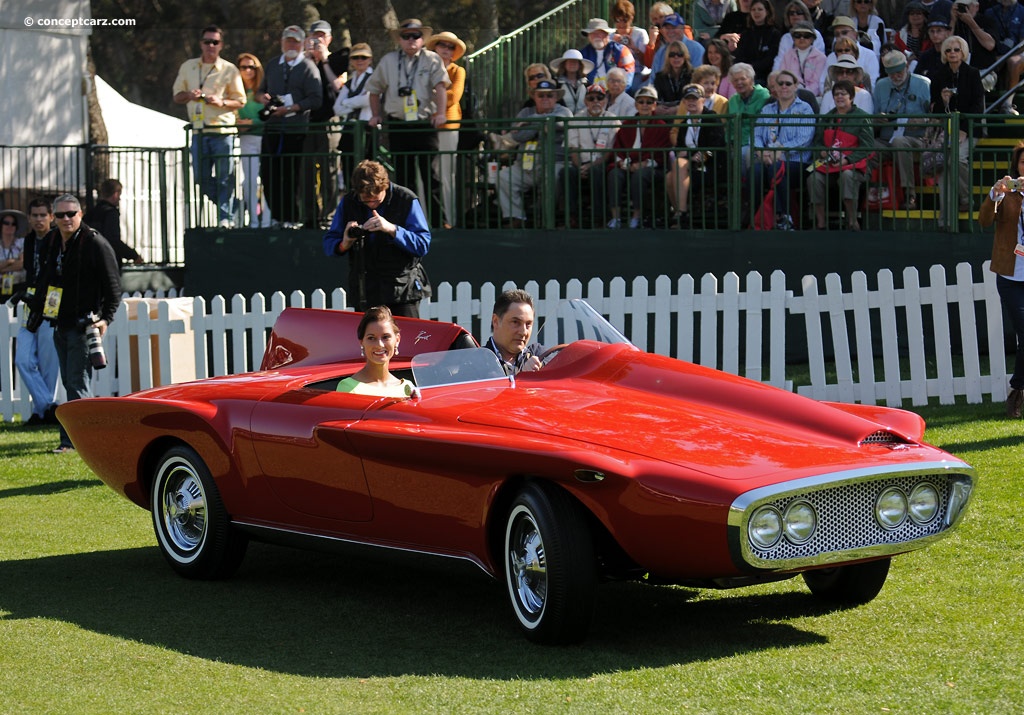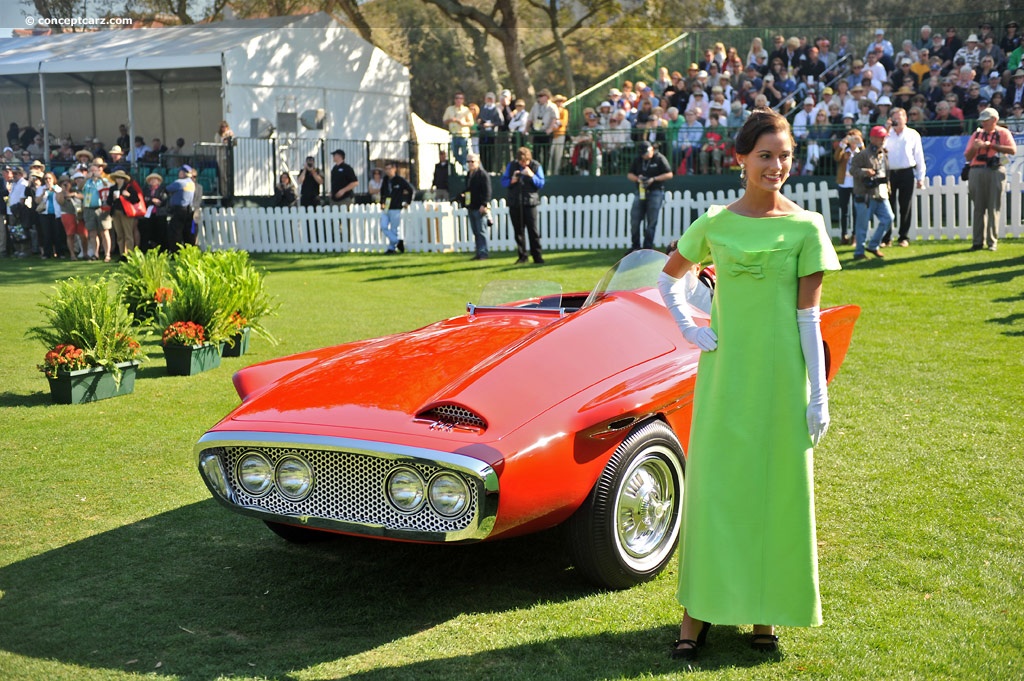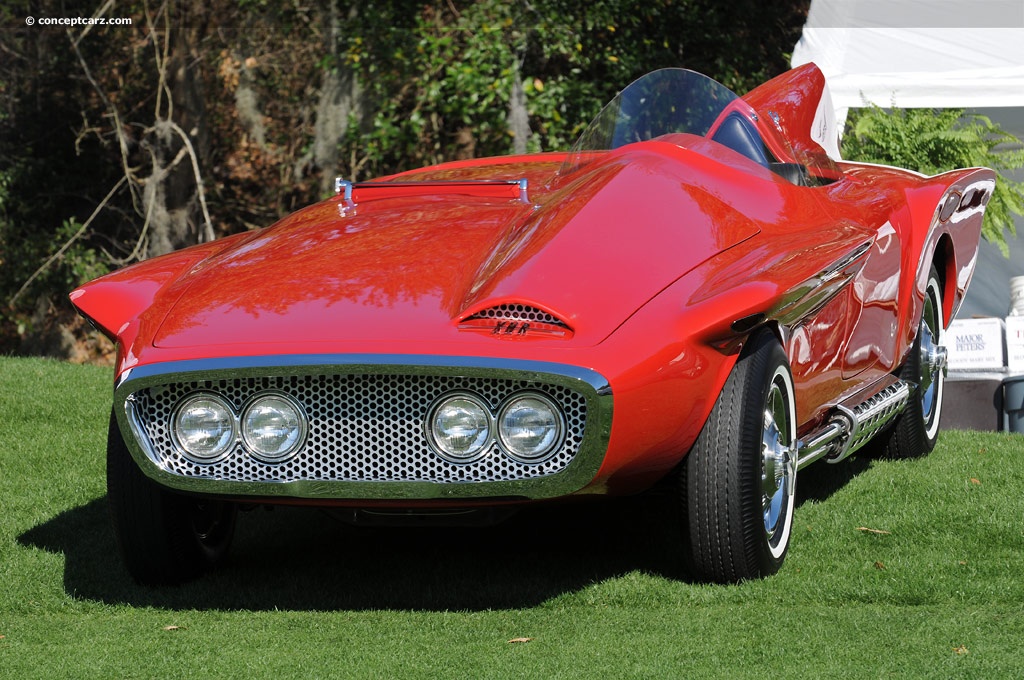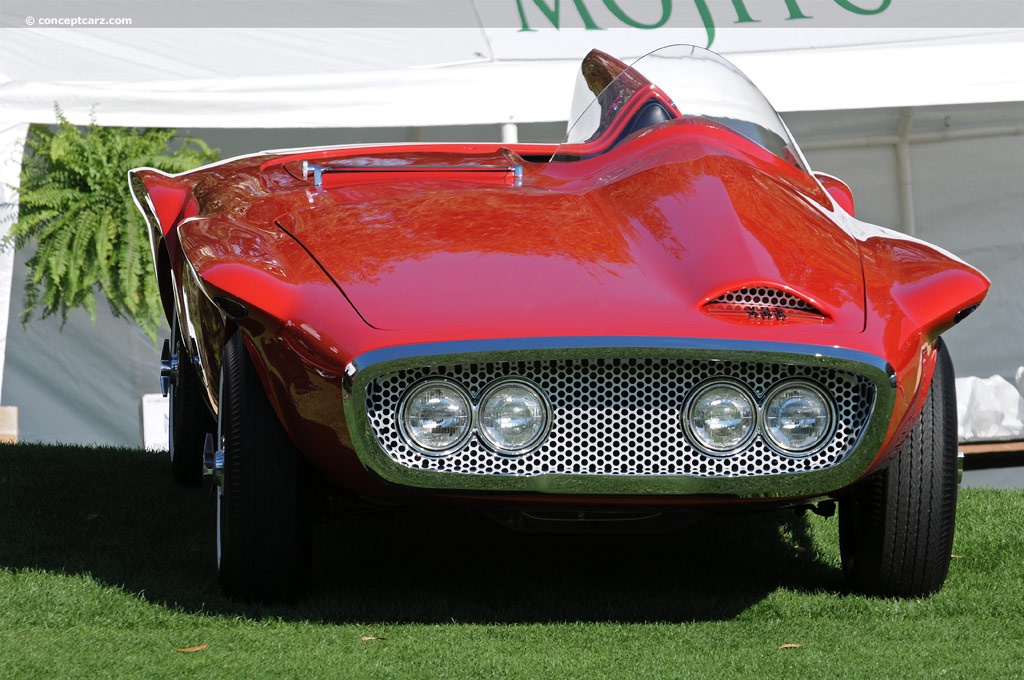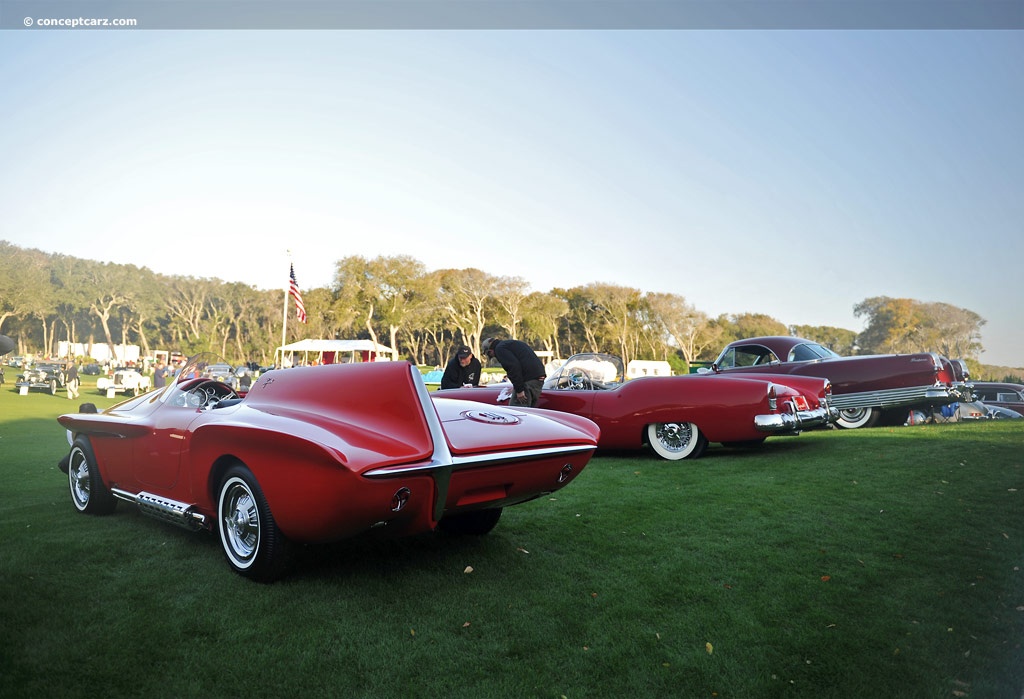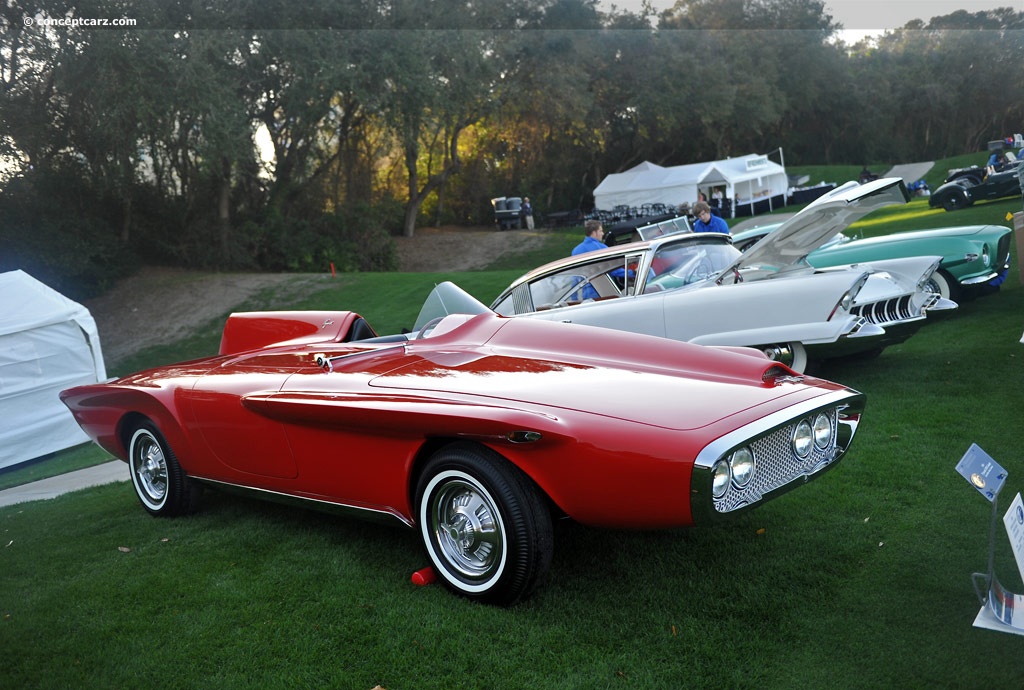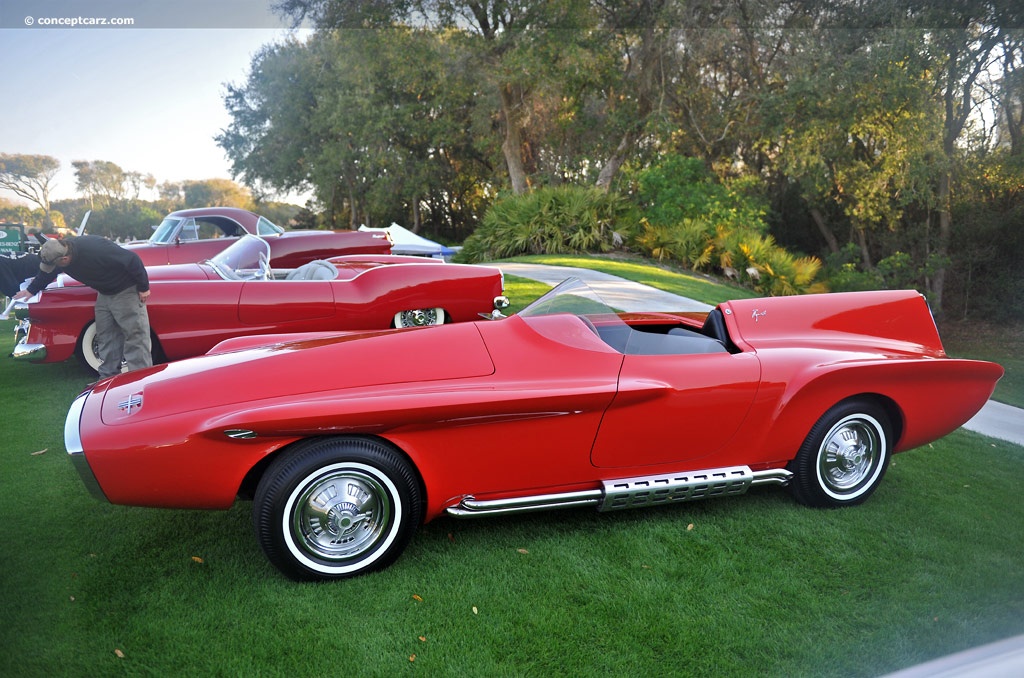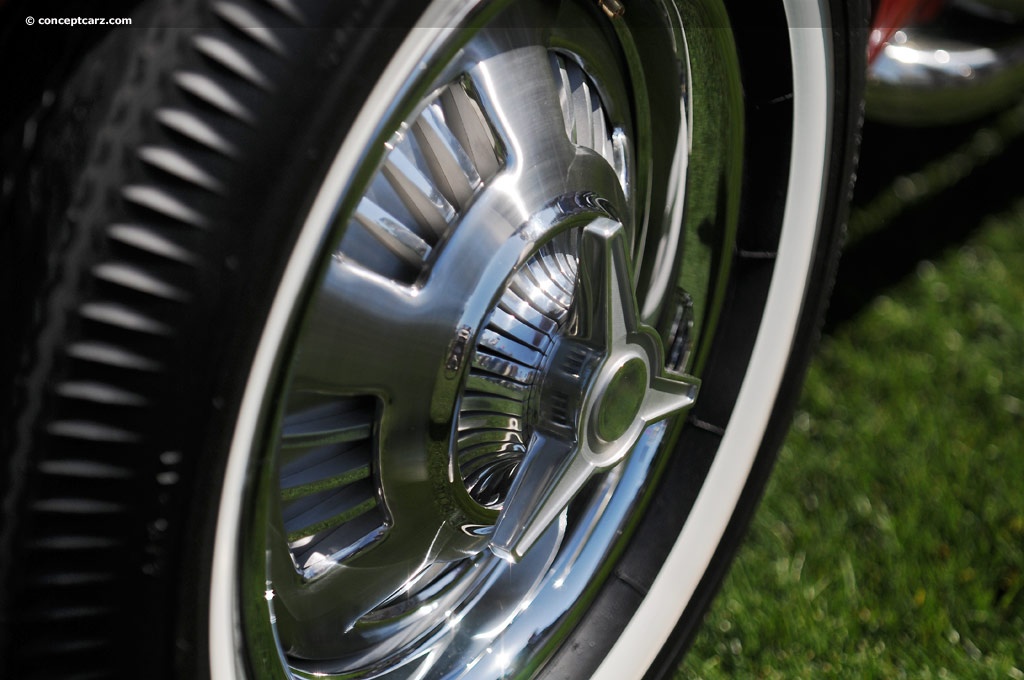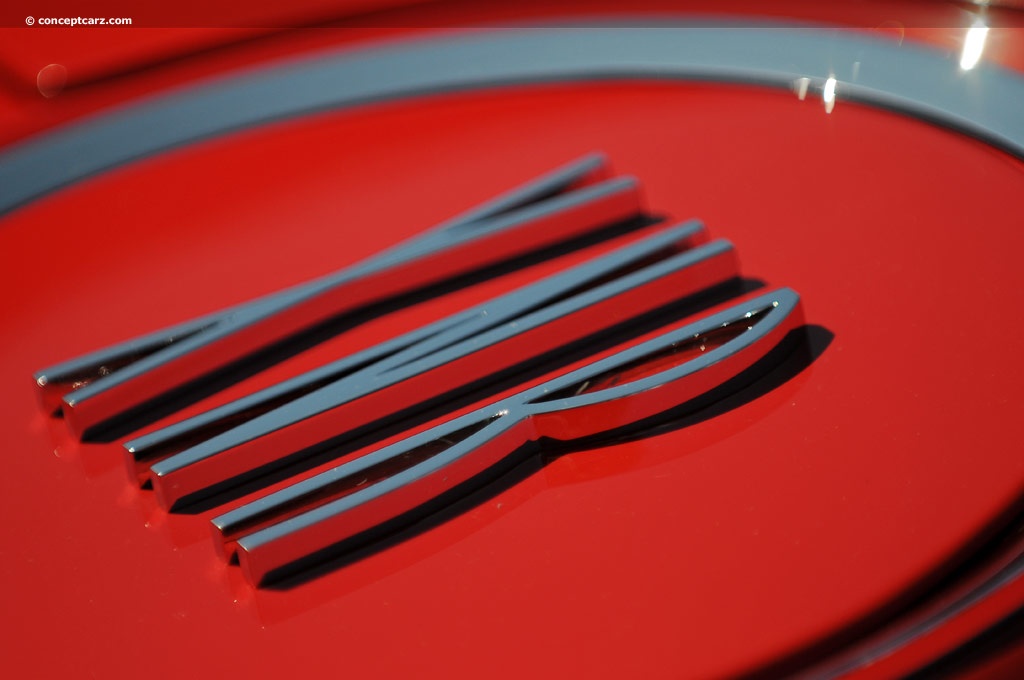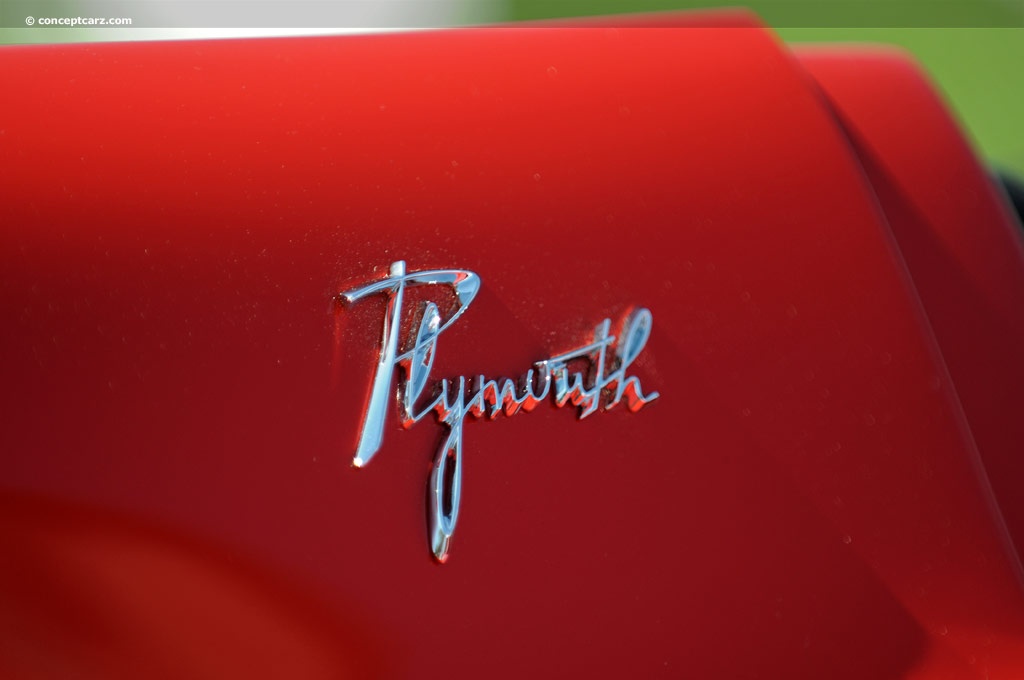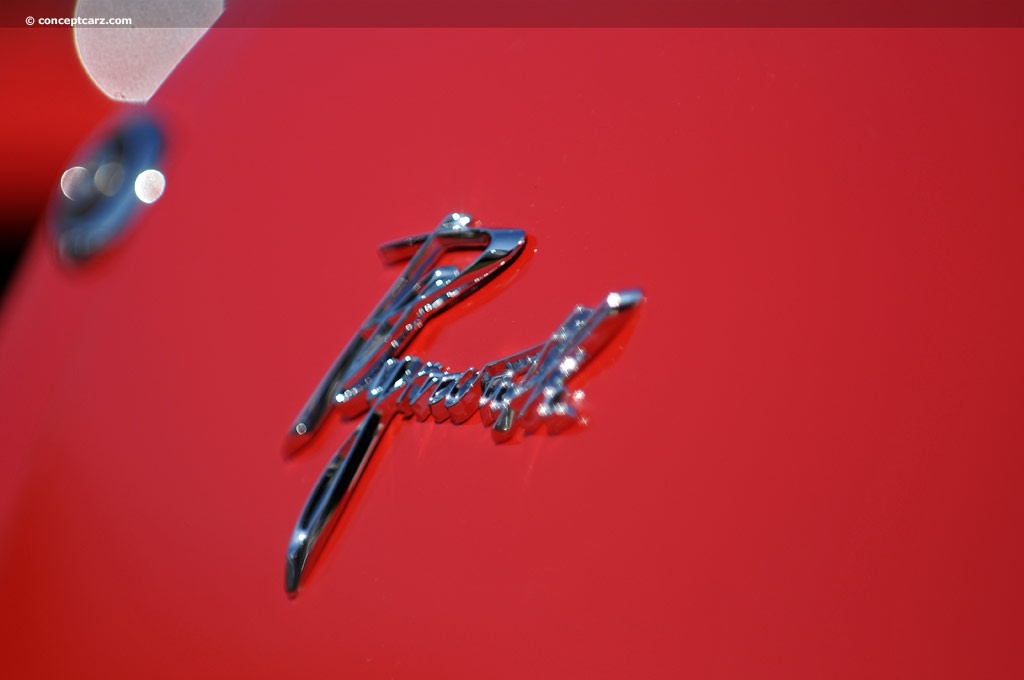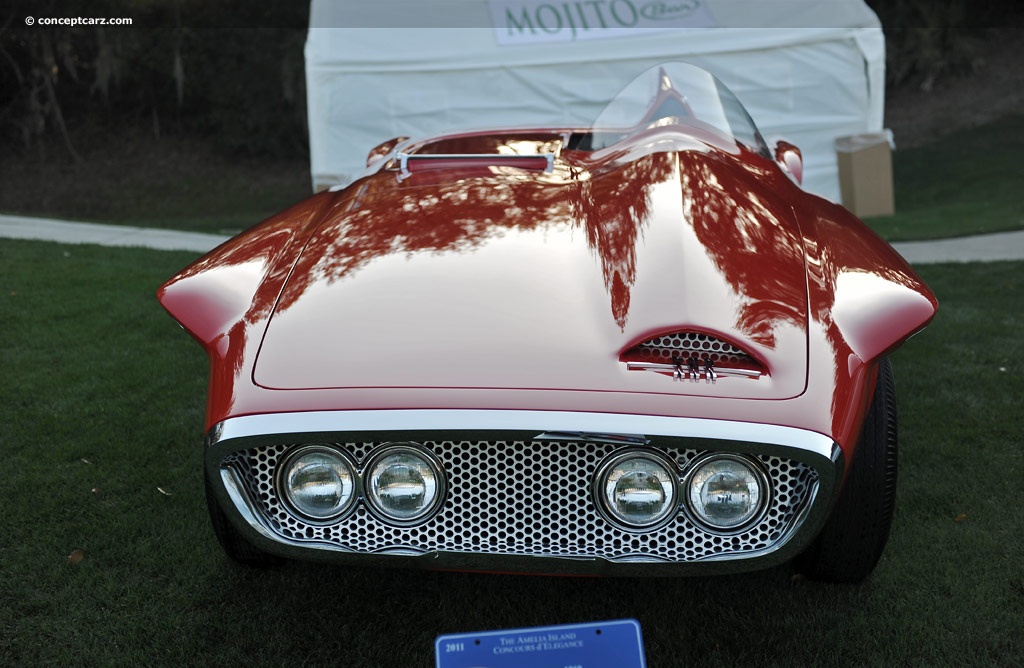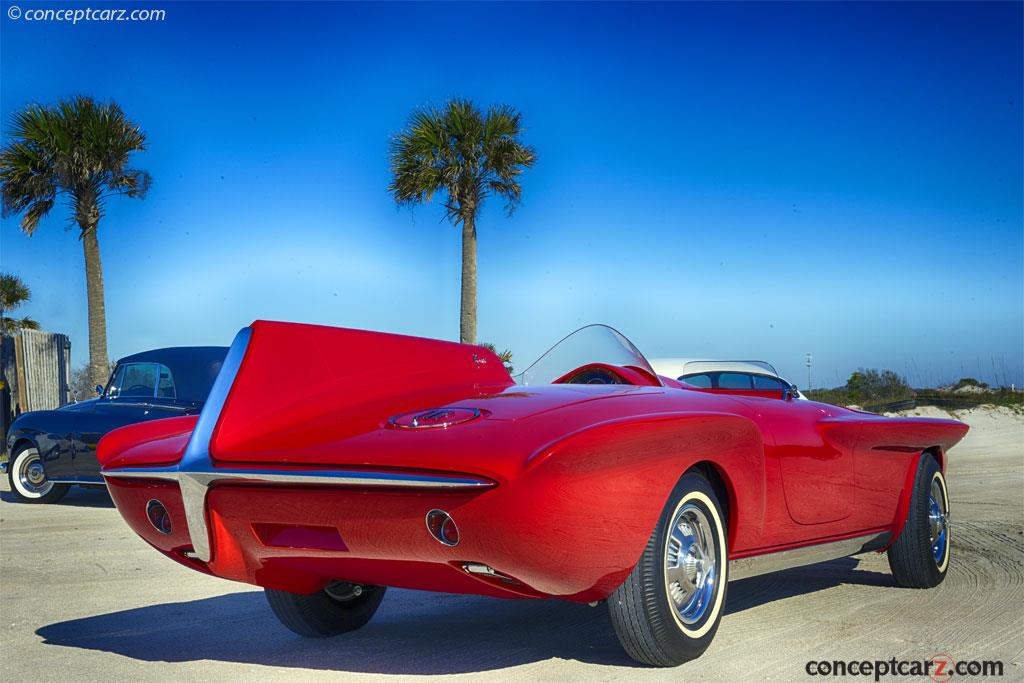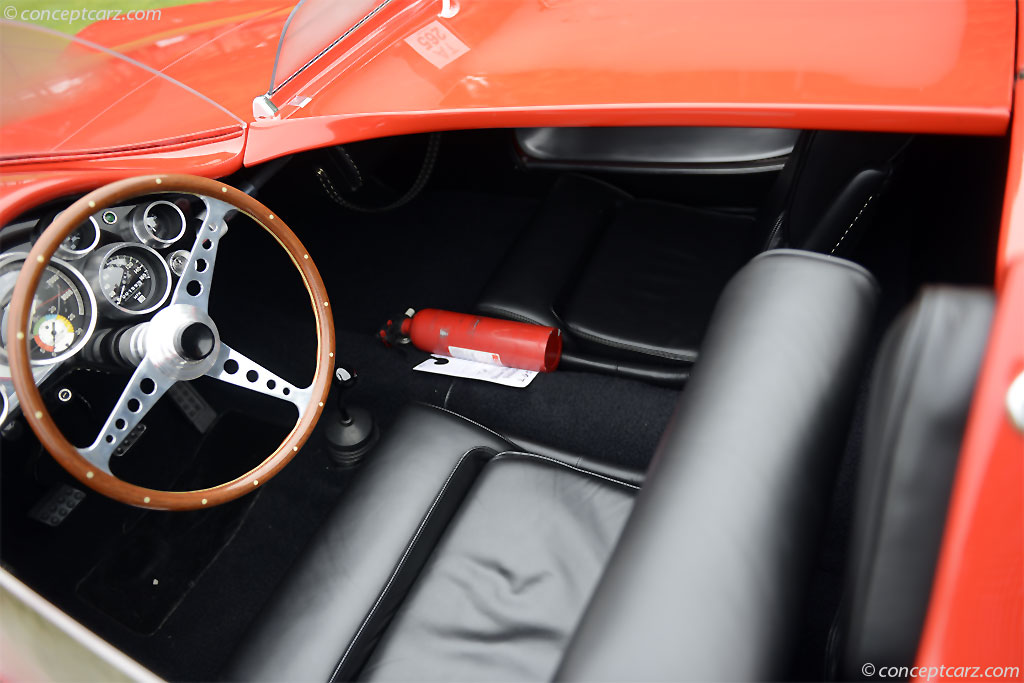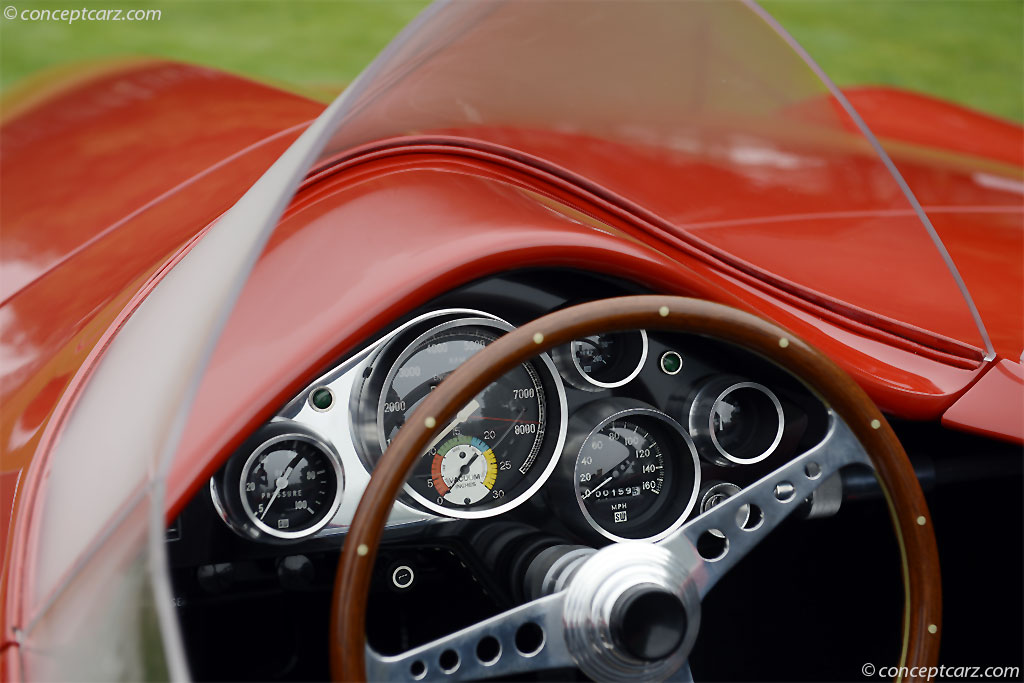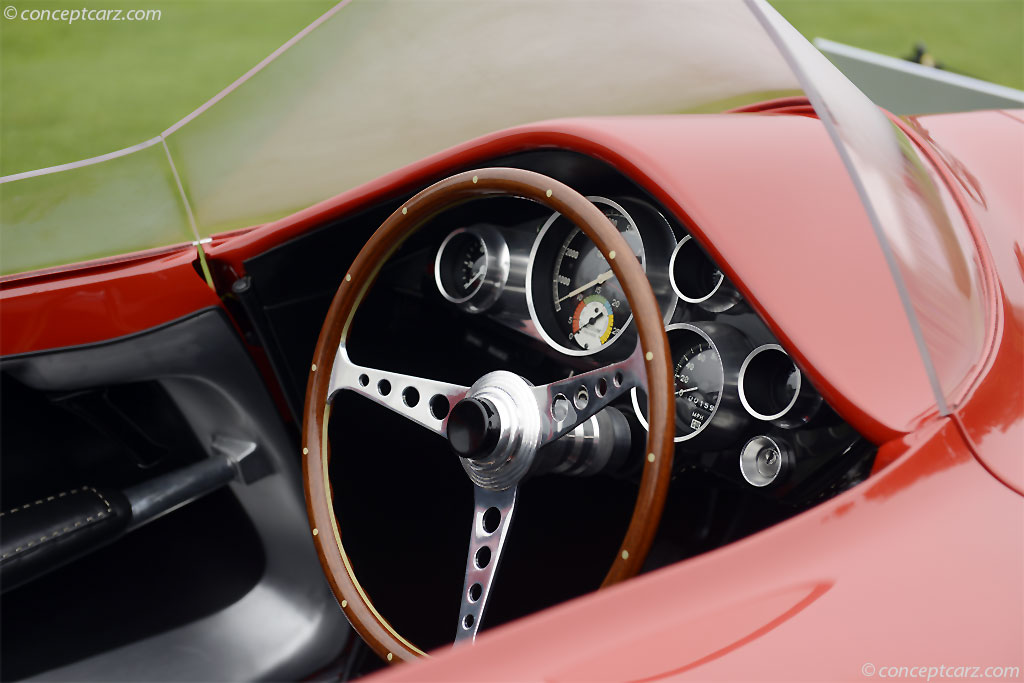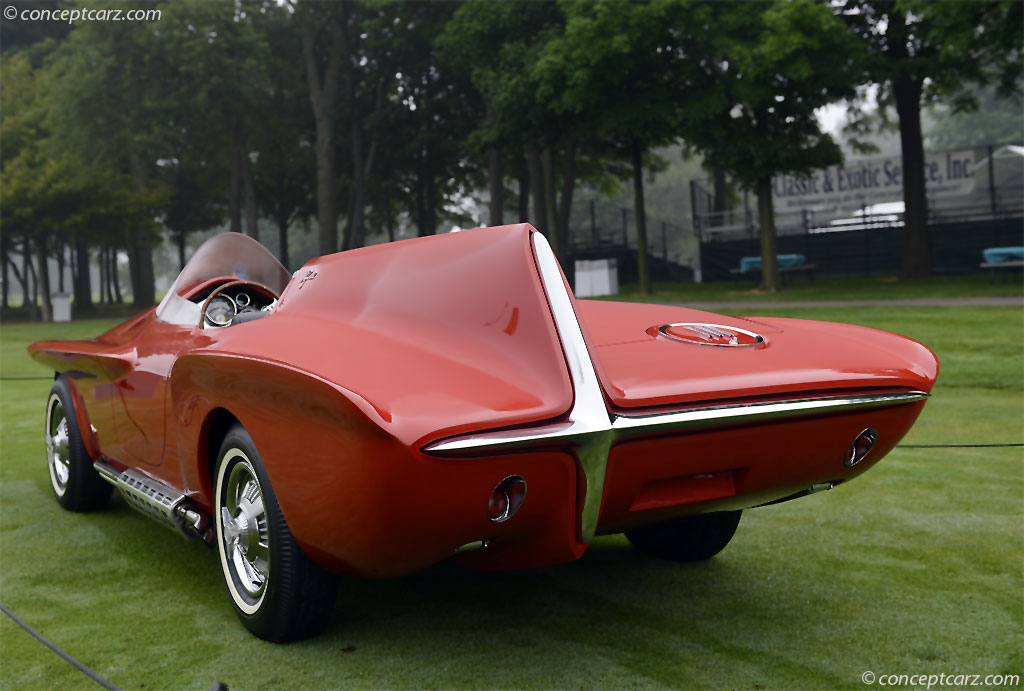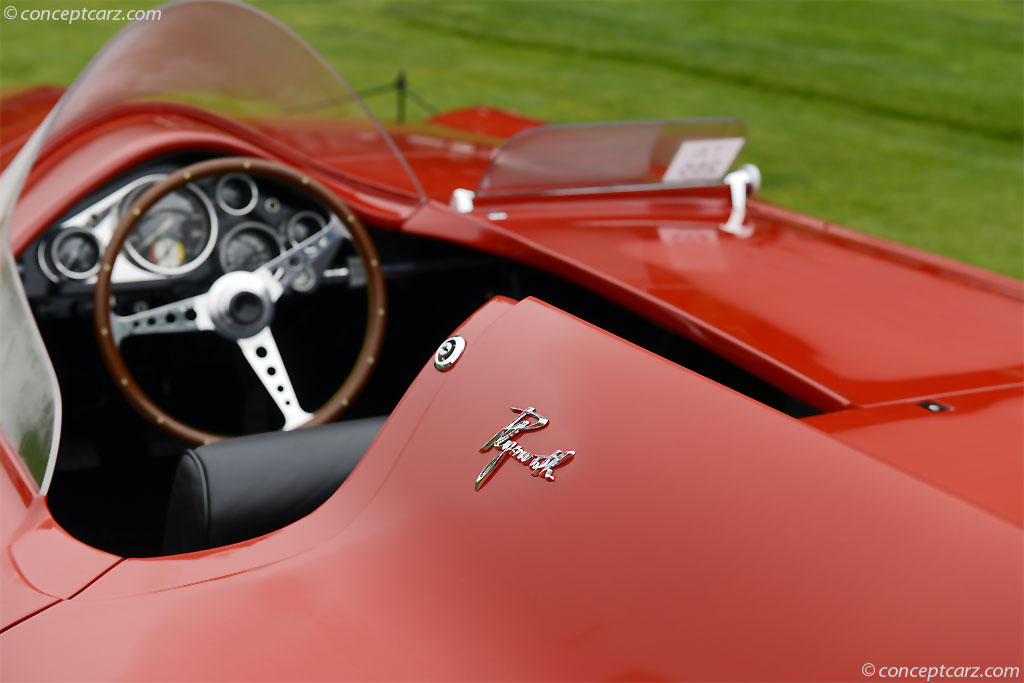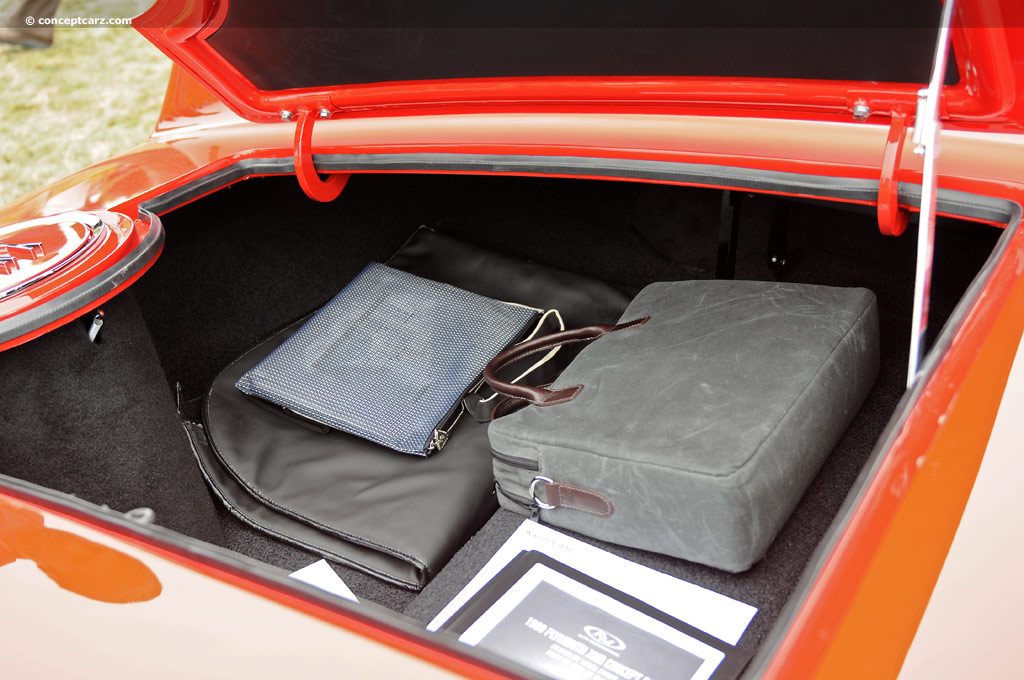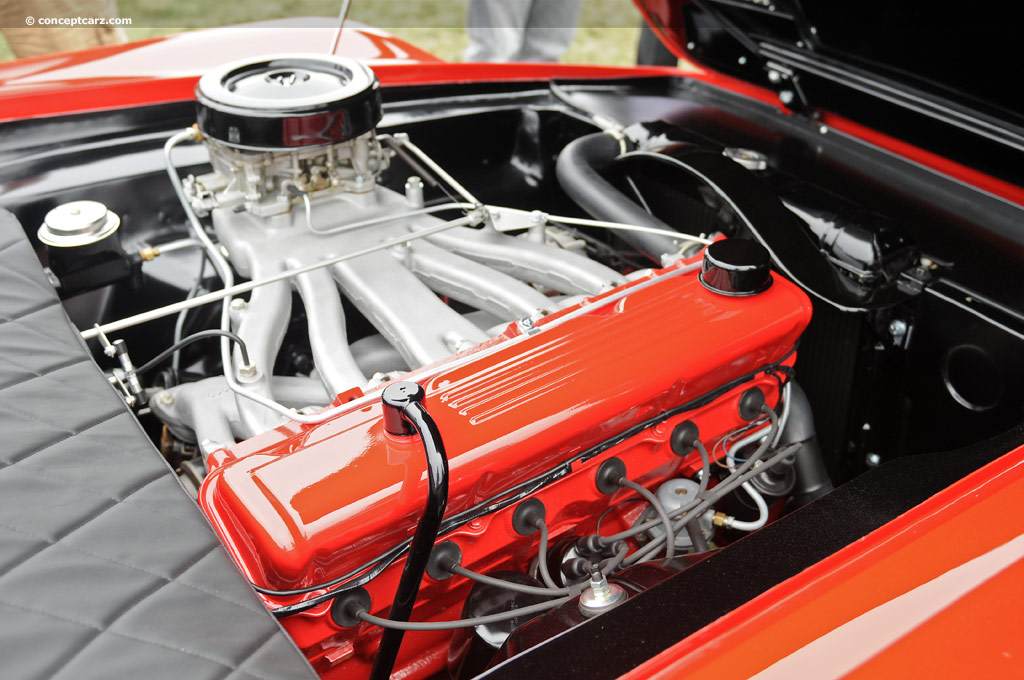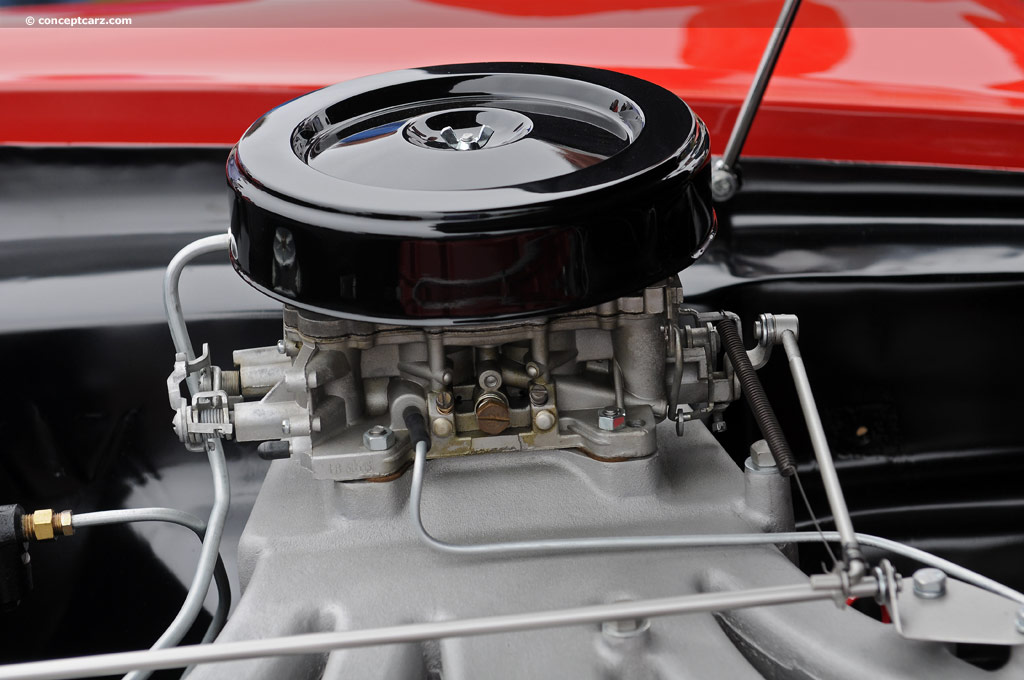his wedge-shaped 1960 show car, named after Chrysler design chief Virgil Exner, was one of the striking ‘idea cars’ of this era. It featured a grille frame that doubled as its front bumpers and had an asymmetrical design in which a hood air scoop began above the grille and tapered back to become the housing of the instrument cluster; then the driver’s padded headrest flowed to the rear as a single fin.
Other features included a leather-covered glove box that doubled as a camera case, and a passenger seat set lower than that driver’s seta, equipped with a separate removable panel. In closed course tests, its 200 hp six-cylinder engine pushed the car to over 140 mph.
